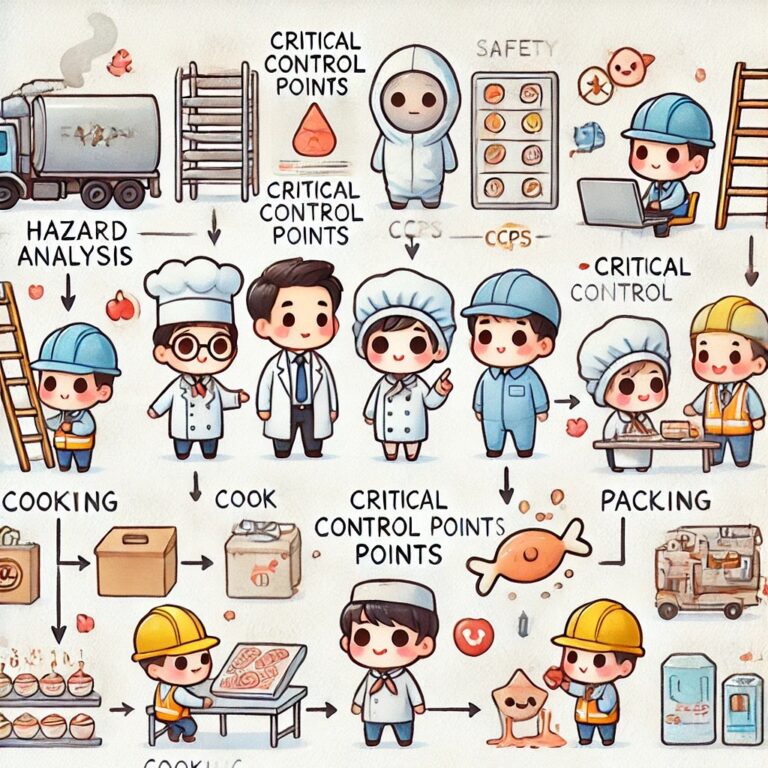
HACCP / ISO 22000 Certification for F&B Businesses
Food safety certification is a major milestone for any F&B business, ensuring compliance with global standards and increasing consumer trust. Whether you run a central kitchen, food manufacturing facility, or restaurant chain, obtaining HACCP (Hazard Analysis and Critical Control Points) or ISO 22000 certification can help you meet regulatory requirements and enhance food safety practices. This guide outlines the key steps to achieving certification and avoiding common pitfalls.
Understanding HACCP & ISO 22000
HACCP is a systematic approach to identifying and controlling food safety hazards, while ISO 22000 is an international food safety management system (FSMS) that integrates HACCP principles with broader risk management strategies.
Why Get HACCP or ISO Certified?
- Compliance with local and international food safety regulations
- Enhanced credibility with suppliers, customers, and regulatory bodies
- Better risk management to prevent foodborne illnesses and recalls
- Improved operational efficiency and food safety culture
Conducting a Gap Analysis
Before starting the certification process, perform a gap analysis to compare your current food safety practices with HACCP/ISO 22000 requirements. This helps identify areas that need improvement.
Key Areas to Assess:
- Existing food safety policies and SOPs
- Facility design and cross-contamination risks
- Supply chain risks and vendor compliance
- Staff training on food safety protocols
Developing a Food Safety Management System (FSMS)
To comply with HACCP and ISO 22000, you need a structured plan and a Food Safety Management System (FSMS) :
A Food Safety Plan Includes:
- Hazard Analysis & Risk Assessment (Identify biological, chemical, and physical hazards)
- Critical Control Points (CCPs) (Determine where hazards can be controlled)
- Monitoring Procedures (Ensure food safety controls are effective)
- Corrective Actions (Steps to take if a CCP fails)
- Verification & Documentation (Recordkeeping for audits)
Training Staff & Implementing Procedures
A strong food safety system depends on well-trained employees.
Conduct regular training on:
- HACCP principles and food safety best practices
- Proper food handling, hygiene, and cleaning protocols
- Emergency response procedures for food safety incidents
- Internal Inspections to ensure compliance before internal or external audits
Conducting an Internal Audit & Pre-Assessment
Before applying for certification, perform an internal audit to verify compliance. Engage an external consultant or auditor to conduct a pre-assessment and provide feedback on areas needing improvement.
Internal audit activities include:
- Review documentation and SOPs to ensure completeness
- Simulate an external audit to test readiness
- Address non-conformities before official certification assessment
Choosing a Certification Body & Passing the Audit
Once you’re ready, select an accredited certification body to conduct the official audit. After a successful audit, you will receive HACCP or ISO 22000 certification, valid for 3 years subject to periodic surveillance audits.
During the certification and maintenance audit, the auditor will:
- Assess your FSMS and HACCP implementation
- Inspect food production areas for compliance
- Interview staff to ensure food safety awareness
- Review documentation and corrective actions
Final Thoughts on HACCP / ISO 22000 Certification
Achieving HACCP or ISO 22000 certification requires careful planning, documentation, and staff training. However, the benefits of stronger food safety controls, legal compliance, and increased business opportunities make it a worthwhile investment. Need expert guidance on HACCP/ISO certification? Food Forward can help!
Get in touch with us today!
